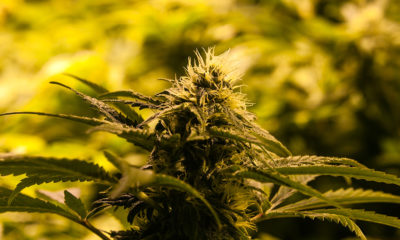
Medical
Oklahoma Medical Marijuana Patients to March on State Capitol
Oklahoma has one of the most permissive medical marijuana industries in the nation, but advocates warn proposed restrictions on dispensary locations and advertising could stifle it.
Fearing the state’s medical marijuana program is under threat from a spread of new bills, Oklahoma medical marijuana advocates plan to march on the state’s Capitol on Thursday, Feb. 6 to urge lawmakers to stand down.
Right now, Oklahoma medical marijuana patients are living the good life compared to most. Nationally, there are basically three systems states use to distribute licenses for dispensaries: blind lotteries, merit-based scored applications that often include court fights over alleged corruption, and then Oklahoma, where there’s an unlimited amount of licenses and applicants just have to check a box.
That has led to quite the booming medical marijuana economy. In October, officials announced 5% of the state population, 200,000 people, has a medical marijuana card. They also said they’ve added roughly 3,500 patients a week since the program kicked off. This past week, while naming Travis Kirkpatrick as its new director, the Oklahoma Medical Marijuana Authority announced that number of patients had jumped up to 246,000. And Oklahoma has the most dispensaries per-capita in the nation, according to Cherokee Phoenix, with 56 per 100,000 residents.
But now, with a ton of bills lined up that will heavily regulate the industry compared to the current status quo, Oklahoma patients plan on taking their concerns directly to lawmakers in Oklahoma City. In addition to the march, those participating are encouraged to try and schedule an afternoon meeting with their lawmakers to press them on issues like advertising and a proposed 1,000-foot buffer zone around churches (though existing dispensaries would be grandfathered in).
Currently, there are 621 dispensaries in Oklahoma, according to new numbers from the Oklahoma Medical Marijuana Authority, and 79% of Oklahomans identify as Christian. With plenty of churches throughout Oklahoma, that means there could be giant spaces that may become off limits to cannabis providers. What if there are a couple of churches downtown in some rural parts of the state and their buffer zones overlap? Advocates are worried that providers would essentially be forced to the least desirable parts of town.
“There is nothing immoral about medicine or responsible adult cannabis consumption, so church buffers don’t really make much sense, but any onerous zoning restrictions that single out cannabis businesses are unfair, have a disproportionate impact on small businesses, and could make it impossible for some communities to safely access regulated cannabis,” Morgan Fox, the National Cannabis Industry Association’s media relations director, told Cannabis Now.
When it comes to advertising, Fox noted NCIA is against any restrictions that go above and beyond those placed on alcohol, “though we do generally support measures to limit exposure to minors.”
LeafLink, who tracks 19,000 products across dispensaries in 10 states, has a new pricing report showing Oklahoma providers have it pretty rough on margins despite the boom in patients as the market is still maturing. The most competitive categories of the market currently are edibles and ingestibles. If you’re making prerolls, you’re in good shape since it’s the least competitive sector of the market. Flowers and concentrates are the fourth most expensive of all the markets LeakLink tracks. Flowers have the lowest profit margin of any product in the market. Currently, a pound of marijuana in Oklahoma wholesales for an average of $2,786.
In their letter to lawmakers in preparation for the lobby day element of the march, advocates say the passage of the state’s medical marijuana law, State Question 788, has allowed hundreds of thousands of Sooners to have a choice in how they treat their illnesses.
“This choice has been especially remarkable for patients who were previously stuck in a cycle of using prescription medication and opiates to treat chronic pain,” the letter read. It also pointed to the sheer volume of Oklahomans taking part in the program as evidence of its need.
“Despite the push back, Oklahoma’s medical marijuana program is the shining example upon the hill compared to many states, and it is imperative that it be protected and allowed to grow. Oklahoma’s unique opportunity to create and harvest green gold should be protected and encouraged just as we do our oil and natural gas markets,” the letter read. “This kind of economic windfall for the people of this state should be supported not oppressed.”
The march will commence at 10 a.m. on Thursday, Feb. 6 at the Oklahoma State Capitol, 2300 North Lincoln Boulevard in Oklahoma City.
TELL US, have you protested for cannabis before?


























